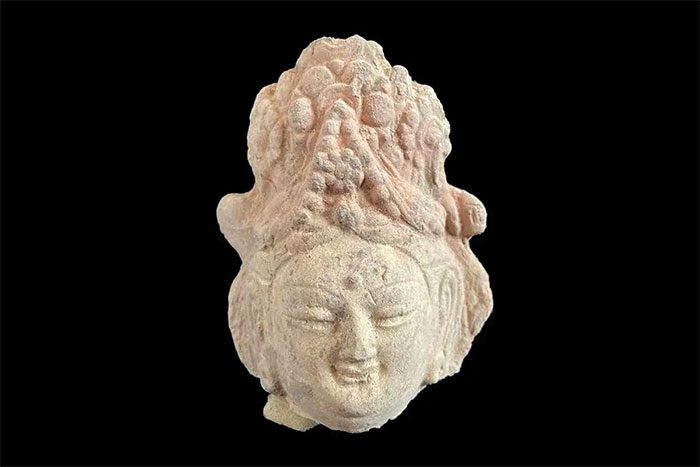A Square Pit Containing Pearls, Jewelry, and Hundreds of Buddha Statues Unearthed in the Ruins of an Ancient Temple.
According to Heritage Daily and Xinhua News Agency, an excavation in the city of Dai Dong, Shanxi Province, China, has revealed an ancient temple from the Northern Wei dynasty, containing numerous treasures and fascinating archaeological data.
Located in the Bingcheng district of the city, the ancient temple is likely associated with a nearby palace.

A statue unearthed from the ruins of the ancient temple in Dai Dong – (Photo: XINHUA).
Dai Dong was established in 200 BC during the Han dynasty of China, but it truly flourished when it became the capital of the Northern Wei dynasty (386-535 AD).
This dynasty witnessed the unification of Northern China, ending the chaotic Sixteen Kingdoms period.
Like many other relics from this era, the ancient temple reflects the prosperity and opulence of this ancient capital region.
The temple was built on a square plot of land, a typical design from the Sui and Tang dynasties of China.
During the excavation of the temple’s foundation, archaeologists were astonished to find over 200 well-preserved Buddha statues. These invaluable artifacts date back at least 1,500 years, not to mention their historical and religious significance, as well as the craftsmanship involved.
Some of the statues are adorned with gold leaf.
Interestingly, in the center of the temple lies a square pit containing numerous pearls, bronze rings, and coral jewelry.
Inspecting the remaining walls and ceilings, archaeologists also discovered traces of colorful murals.
According to researcher Li Shuyun from the Shanxi Provincial Archaeological Institute, the ancient temple has provided new insights into Buddhist temple architecture during the Northern Wei dynasty. It is also the best-preserved ancient temple in the region.




















































